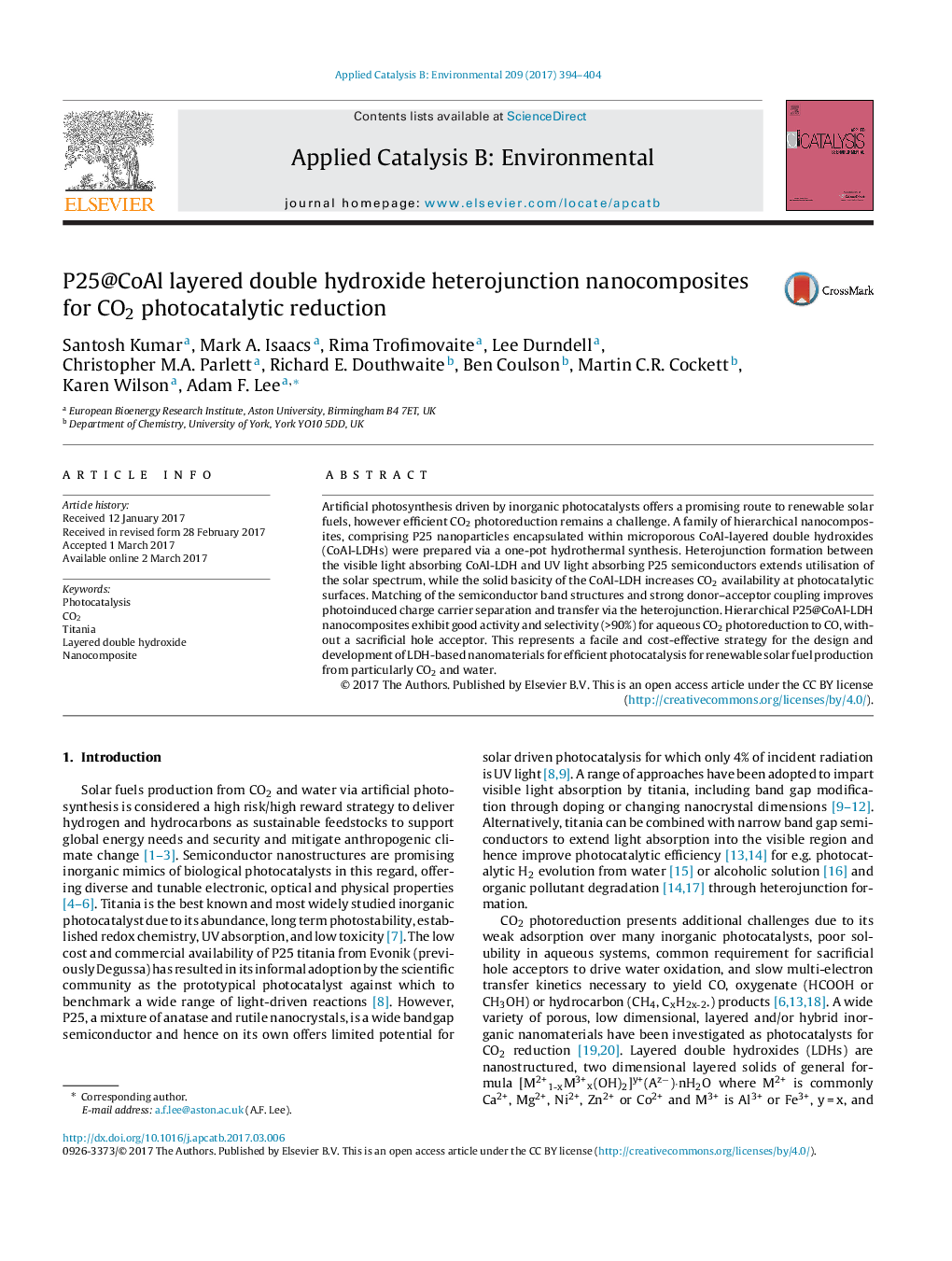| Article ID | Journal | Published Year | Pages | File Type |
|---|---|---|---|---|
| 6454191 | Applied Catalysis B: Environmental | 2017 | 11 Pages |
â¢Nanocomposite photocatalysts have been synthesized from titania (P25) and Co-Al layered double hydroxide (LDH) components.â¢Heterojunctions between the semiconductor components improves photoinduced charge carrier separation and transport.â¢Hierarchical P25@CoAl-LDH nanocomposites are active for aqueous CO2 photoreduction to CO without sacrificial hole acceptors.
Artificial photosynthesis driven by inorganic photocatalysts offers a promising route to renewable solar fuels, however efficient CO2 photoreduction remains a challenge. A family of hierarchical nanocomposites, comprising P25 nanoparticles encapsulated within microporous CoAl-layered double hydroxides (CoAl-LDHs) were prepared via a one-pot hydrothermal synthesis. Heterojunction formation between the visible light absorbing CoAl-LDH and UV light absorbing P25 semiconductors extends utilisation of the solar spectrum, while the solid basicity of the CoAl-LDH increases CO2 availability at photocatalytic surfaces. Matching of the semiconductor band structures and strong donor-acceptor coupling improves photoinduced charge carrier separation and transfer via the heterojunction. Hierarchical P25@CoAl-LDH nanocomposites exhibit good activity and selectivity (>90%) for aqueous CO2 photoreduction to CO, without a sacrificial hole acceptor. This represents a facile and cost-effective strategy for the design and development of LDH-based nanomaterials for efficient photocatalysis for renewable solar fuel production from particularly CO2 and water.
Graphical abstractDownload high-res image (190KB)Download full-size image
